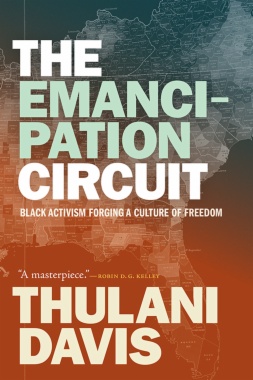In The Emancipation Circuit Thulani Davis provides a sweeping rethinking of Reconstruction by tracing how the four million people newly freed from bondage created political organizations and connections that mobilized communities across the South. Drawing on the practices of community they developed while enslaved, freedpeople built new settlements and created a network of circuits through which they imagined, enacted, and defended freedom. This interdisciplinary history shows that these circuits linked rural and urban organizations, labor struggles, and political culture with news, strategies, education, and mutual aid. Mapping the emancipation circuits, Davis shows the geography of ideas of freedom---circulating on shipping routes, via army maneuvers, and with itinerant activists---that became the basis for the first mass Black political movement for equal citizenship in the United States. In this work, she reconfigures understandings of the evolution of southern Black political agendas while outlining the origins of the enduring Black freedom struggle from the Jim Crow era to the present.
- Cover
- Contents
- List of Maps
- List of Tables
- Acknowledgments
- Gallery
- Introduction: Black Political Thought as Shaped in the South
- 1. Flight: Movement Matters
- 2. The Emancipation Circuit: A Road Map
- 3. Virginia: Assembly
- 4. North Carolina: Custody
- 5. South Carolina: Majority
- 6. Georgia: Mobilization
- 7. Florida: Faction
- 8. Alabama: Redemption
- 9. Louisiana: Societies
- 10. Mississippi: Bulldoze
- 11. Arkansas: Minority
- Conclusion: What Lives On Is Black Political Thought
- Notes
- Bibliography
- Table Source Notes
- Index
- A
- B
- C
- D
- E
- F
- G
- H
- I
- J
- K
- L
- M
- N
- O
- P
- Q
- R
- S
- T
- U
- V
- W
- Y
- Z

